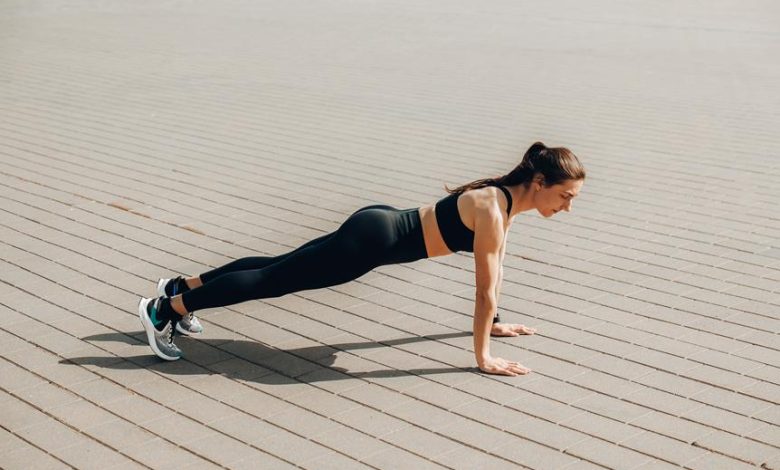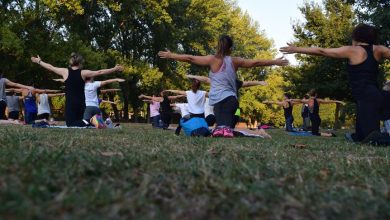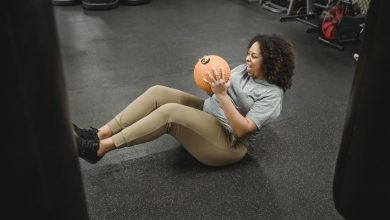Get Ripped With This Quick Bodyweight Workout

Looking to get ripped? Look no further! This quick bodyweight workout is all you need. With just a few exercises, you can build muscle and achieve your fitness goals. No fancy equipment or gym membership required – just your determination and dedication. Challenge your muscles, see results, and transform your body. Whether you're a beginner or a seasoned gym-goer, this workout is perfect for you. Get ready to sweat, push yourself, and watch as your muscles grow. Let's get ripped together!
Key Takeaways
- Bodyweight exercises can effectively build muscle mass.
- Continuously challenge your muscles by increasing reps and decreasing rest periods.
- Perform more difficult variations of exercises to further enhance muscle growth.
- Proper nutrition and a healthy eating plan are crucial for successful weight loss and fitness goals.
The Science Behind Bodyweight Training for Muscle Building
You can understand the science behind bodyweight training for muscle building by exploring the principles of progressive overload and muscle adaptation. Bodyweight training offers numerous benefits for muscle building, such as increased strength, improved endurance, and enhanced overall fitness. By challenging your muscles through exercises like push-ups, squats, and lunges, you can stimulate muscle growth and development. It's important to remember that nutrition also plays a crucial role in muscle building with bodyweight training. To optimize your results, focus on consuming an adequate amount of protein to support muscle repair and growth. Additionally, ensure you are fueling your body with a balanced diet that includes carbohydrates and healthy fats. By combining proper nutrition with effective bodyweight training, you can maximize your muscle-building potential and achieve your fitness goals. Keep pushing yourself and stay consistent in your efforts to see the best results.
Mastering the Beginner Bodyweight Workout: Step-by-Step Guide
To successfully master the beginner bodyweight workout, follow these step-by-step instructions for maximum results. First and foremost, mastering proper form is essential to avoid injury and get the most out of each exercise. Take the time to learn the correct technique for each movement, focusing on proper alignment and engaging the targeted muscles. Secondly, be aware of common mistakes that can hinder your progress. One common mistake is rushing through the exercises without maintaining control. Slow down and focus on quality reps rather than quantity. Another mistake is neglecting to rest when needed. Resting allows your muscles to recover and prevents fatigue-induced poor form. Lastly, always listen to your body. If an exercise feels too challenging or causes pain, modify it or seek guidance from a fitness professional. By mastering proper form and avoiding common mistakes, you'll be on your way to achieving your fitness goals with the beginner bodyweight workout.
Unleash Your Strength: Best Bodyweight Exercises for Beginners
Build your strength and confidence with these best bodyweight exercises for beginners. Incorporating bodyweight exercises into your fitness routine can provide numerous benefits, including weight loss and improved overall fitness. Here are five essential bodyweight exercises for beginners:
- Knee push-up: Start with modified push-ups on your knees to build upper body strength.
- Assisted bodyweight squat: Use a support like a chair or wall to help you perform proper squats if regular squats are too challenging.
- Supported lunges: Improve balance and strength by performing lunges with the help of a chair or wall.
- One-arm row: Use a milk jug or dumbbell to strengthen your back muscles with this exercise.
- Plank: Engage your core muscles and build stability with the plank exercise.
Remember to start slow and gradually increase the intensity of your workouts. With consistency and dedication, these bodyweight exercises will help you achieve your fitness goals and unleash your strength.
Form Is Key: Perfecting Your Squat and Push-Up Technique
Start by mastering the proper technique for the squat and push-up, as form is key to getting the most out of these exercises. Proper form not only helps prevent injury but also ensures that you target the right muscles and maximize your results. Here are some common mistakes to avoid and the benefits of proper form for squats and push-ups:
| Exercise | Common Mistakes | Benefits of Proper Form |
|---|---|---|
| Squats | – Knees collapsing inward<br>- Leaning too far forward<br>- Not going low enough | – Targets glutes, quads, and hamstrings<br>- Builds lower body strength<br>- Improves overall stability |
| Push-Ups | – Sagging hips<br>- Elbows flaring out<br>- Not engaging core | – Targets chest, shoulders, and triceps<br>- Builds upper body strength<br>- Enhances core stability |
Taking It to the Next Level: Advanced Variations and Progressions
Challenge yourself with these advanced variations and progressions to take your bodyweight workout to the next level. Here are some techniques and tips to help you maximize your workout and avoid common mistakes:
- One-handed push-ups: Increase the difficulty by performing push-ups with one hand on the ground and the other hand behind your back. Maintain a strong core and keep your body in a straight line.
- Pistol squats: This advanced variation requires balance and strength. Lower yourself down on one leg while keeping the other leg extended in front of you. Control your descent and push through your heel to stand back up.
- Archer pull-ups: Work your back and arms with this challenging exercise. As you pull yourself up, move to one side, extending your arm and reaching towards the opposite side.
- Handstand push-ups: Build upper body strength by doing push-ups in a handstand position. Keep your core engaged and your body in a straight line as you lower yourself down and push back up.
- Advanced plank variations: Try plank variations such as side planks, plank jacks, or plank with leg lifts to target different muscle groups and increase the intensity of your core workout.
Remember to always maintain proper form and technique to get the most out of these advanced variations. Start slowly and gradually increase the difficulty as you become more comfortable. Don't forget to listen to your body and rest when needed. Keep pushing yourself and enjoy the challenge of these advanced bodyweight exercises!
Maximizing Results: Time Under Tension and Repetition Strategies
To make the most of your workout and see optimal results, focus on maximizing time under tension and implementing effective repetition strategies. Time under tension refers to the duration that your muscles are actively engaged during an exercise. This is crucial for muscle growth and strength development. Slow down your movements and maintain control throughout each repetition to increase time under tension. Additionally, vary your repetition strategies to challenge your muscles in different ways. Incorporate techniques such as drop sets, where you reduce the weight after reaching muscle failure, or pause reps, where you hold the contraction at the peak for a few seconds. By constantly challenging your muscles with different repetition strategies, you can ensure continuous progress and maximize your muscle-building potential.
The Power of Circuits: How to Structure Your Bodyweight Workout
Perform three circuits in your bodyweight workout to optimize your results. Structuring circuits for efficient workouts is key to getting the most out of your bodyweight exercises. Here's how to do it:
- Choose a variety of exercises that target different muscle groups.
- Perform each exercise for a set amount of time or a specific number of reps.
- Take minimal rest between exercises to keep your heart rate up.
- Repeat the circuit two more times to complete three rounds.
- Adapt bodyweight exercises for different fitness levels by modifying the intensity or difficulty of the exercises.
Finding Your Frequency: Optimal Training Schedule for Results
To maximize your results, you should aim to find the optimal training schedule that works for you. One important aspect to consider is the frequency of your workouts. Finding the right balance between training and rest is crucial for muscle recovery and growth.
To help you plan your training schedule effectively, here is a table outlining some options:
| Training Frequency | Strength Training Days | Rest Days |
|---|---|---|
| 2 times a week | Monday, Thursday | Rest on other days |
| 3 times a week | Monday, Wednesday, Friday | Rest on other days |
| 4 times a week | Monday, Tuesday, Thursday, Friday | Rest on other days |
Remember, it's essential to incorporate rest days to allow your muscles time to repair and grow stronger. Additionally, you can also consider incorporating resistance bands into your workouts. These versatile tools can add an extra challenge to your bodyweight exercises and help you build muscle and strength effectively.
Finding the optimal training schedule and incorporating resistance bands can take your bodyweight workout to the next level, helping you achieve your fitness goals faster. Stay consistent, listen to your body, and make adjustments as needed to keep progressing on your fitness journey.
Beyond Bodyweight: Incorporating Interval Training for High-Intensity Workouts
For an even greater challenge, try incorporating interval training into your high-intensity workouts. Interval training involves alternating periods of intense exercise with periods of rest or lower intensity activity. This type of training has numerous benefits, including increased calorie burn, improved cardiovascular fitness, and enhanced muscle endurance. To incorporate interval training into your bodyweight workouts, consider the following:
- Choose exercises that can be performed at a high intensity, such as burpees or mountain climbers.
- Set a timer or use a stopwatch to track your work and rest intervals.
- Start with shorter intervals, such as 30 seconds of work and 30 seconds of rest, and gradually increase the duration as your fitness level improves.
- Incorporate weights into your bodyweight exercises to add resistance and further challenge your muscles.
- Be sure to warm up properly before starting your interval training session and cool down afterwards to prevent injury.
Fueling Your Success: Nutrition Tips for Effective Weight Loss
Improve your weight loss journey by incorporating these nutrition tips for effective results. Nutrition plays a crucial role in weight loss, and it's important to prioritize healthy eating for your fitness goals. First, focus on portion control by measuring your food and avoiding oversized servings. Also, make sure to include a balance of macronutrients in your meals, such as lean proteins, complex carbohydrates, and healthy fats. Additionally, stay hydrated by drinking plenty of water throughout the day. Another tip is to avoid sugary drinks and opt for healthier alternatives like herbal tea or infused water. Lastly, be mindful of your snacking habits and choose nutritious options like fruits, vegetables, or nuts. By following these nutrition tips, you can support your body's weight loss process and achieve effective results.
Frequently Asked Questions
Can Bodyweight Exercises Build Muscle Mass?
Yes, bodyweight exercises can build muscle mass. By continuously challenging your muscles with increasing reps, decreasing rest periods, and performing more difficult variations, you can stimulate muscle growth. Bodyweight exercises also increase time under tension, which promotes muscle development. While weightlifting is effective, bodyweight exercises offer benefits for overall fitness such as improved balance, flexibility, and functional strength. Incorporating bodyweight exercises into your routine can help you achieve your fitness goals.
How Can I Progress in My Bodyweight Workouts to Continue Building Muscle?
To continue building muscle in your bodyweight workouts, you need to focus on progression techniques. Increase your reps, decrease rest periods, and try more challenging variations. Slowing down your movements can also increase time under tension. The benefits of bodyweight training are immense, from building strength and muscle to improving flexibility and balance. Remember, consistency is key. Keep pushing yourself and you'll see the results you desire. Keep going, you've got this!
What Are the Best Bodyweight Exercises for Beginners?
To start your bodyweight training journey, the top exercises for beginners include knee push-ups, assisted bodyweight squats, and supported lunges. Modify these moves to match your fitness level. As you progress, challenge yourself with regular push-ups, bodyweight squats, and regular lunges. Remember to focus on proper form and increase the number of reps. With dedication and consistency, you'll build strength and achieve your fitness goals. Keep pushing yourself and never give up!
How Often Should I Do the Beginner Bodyweight Workout?
You should aim to do the beginner bodyweight workout 2-3 times a week to see results. Consistency is key. Remember, good things take time. It's important to be patient and persistent. The beginner bodyweight workout can be done at home, making it convenient for you. Make sure to follow proper form and technique to avoid injury. Take your time and listen to your body. Keep pushing yourself and you'll see progress in no time.
Can Bodyweight Training Alone Be Effective for Weight Loss, or Is Nutrition Also Important?
Can bodyweight training alone be effective for weight loss, or is nutrition also important? Nutrition is crucial for weight loss, even with bodyweight training. While exercise helps burn calories and build muscle, it's not enough on its own. To lose weight effectively, you need to fix your relationship with food and prioritize healthy eating. Ensure you're consuming a balanced diet that supports your fitness goals. Remember, exercise and nutrition go hand in hand for successful weight loss.



